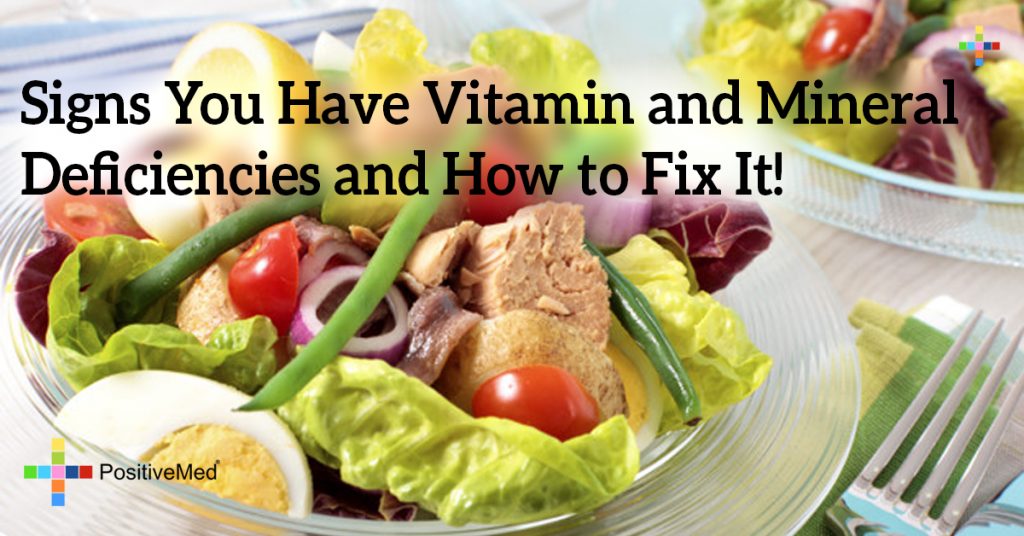
Signs You Have Vitamin and Mineral Deficiencies and How to Fix It!
Knowing about several common vitamin and mineral deficiencies, and using food as a medicine can often provide a quick fix for whatever ails the person. That being said, always remember that each human body is different and each responds to different vitamins and recommended dosages differently.
Vitamin A Deficiency:
A public health problem in more than half of all countries, especially underdeveloped nations, this vitamin deficiency hits hardest among small children and pregnant women.
Vitamin A deficiency is mostly evident in persons having dry eyes, night blindness, dry skin and diarrhea.
Best sources:
Tuna, squash, sweet potatoes, carrots and basically any food of a bright red or orange color. [That said, this is the rule for healthy, nutritious eating: the more colorful the food, the more nutritious it is.]
Vitamin C Deficiency:
Today, Vitamin C, a perennial powerhouse vitamin, is more popular than ever due to a reported 60 percent reduction of facial wrinkles when applied directly to the skin.
Cataracts, gingivitis, slow healing wounds, depression, nosebleed, quick bruising, bleeding gums and a tendency towards hypertension are typically associated with low amounts of this vitamin in the body.
Best sources:
Citrus foods, dark green, leafy vegetables, bell peppers, broccoli, berries, tomatoes, and papayas.
RELATED ARTICLE: The Science of Vitamins and the Body
Vitamin D Deficiency:
Few foods have therapeutic levels of Vitamin D as it is not significantly obtained through food. According to the Centers for Disease Control and Prevention (CDC), 32 percent of the U.S. population is Vitamin D deficient. Furthermore, over 95 percent of U.S. seniors are particularly subject to a deficiency of this vitamin.
Soft skeletal structures and susceptibility to colds and flu are typical manifestations of this vitamin deficiency.
Best sources:
Fish oils, fatty fish, mushrooms, beef liver, cheese and egg yolks. However, the highest source of this vitamin is via the rays of the sun, hence, it’s known as “the sunshine vitamin.”
B-Complex Deficiencies:
B2, riboflavin; B3, niacin; B7, biotin; and B12, cobalamin
Usually indicative of a diet lacking in protein, deficiency in this vitamin can easily set the stage for pernicious anemia.
Hair loss or nervousness, scaly or reddish facial rash, lack of energy and anemia are typical tell-tale symptoms.
Best sources:
Poultry, clams, salmon, Swiss chard, liver, and legumes.
Mineral Deficiencies:
There are five main types of mineral deficiencies known to medical science: calcium, iron, magnesium, potassium and zinc. According to the World Health Organization(WHO), more than 80 percent of the world’s population lacks sufficient iron levels in their bodies.
Dizziness, shortness of breath, the state of being cold, headaches and paleness are telling indications of an iron deficiency in the body. Muscle cramps in the legs, such as in restless leg syndrome(RLS), are also indicative of mineral deficiencies, possibly calcium or magnesium.
Best sources:
Adding dark leafy greens, kale, spinach and dandelion along with nuts, seeds, and fish help avoid anemia.
Have you any of the above symptoms or illnesses mentioned? If so, how well do you supplement your bodily needs with vitamins and minerals?





